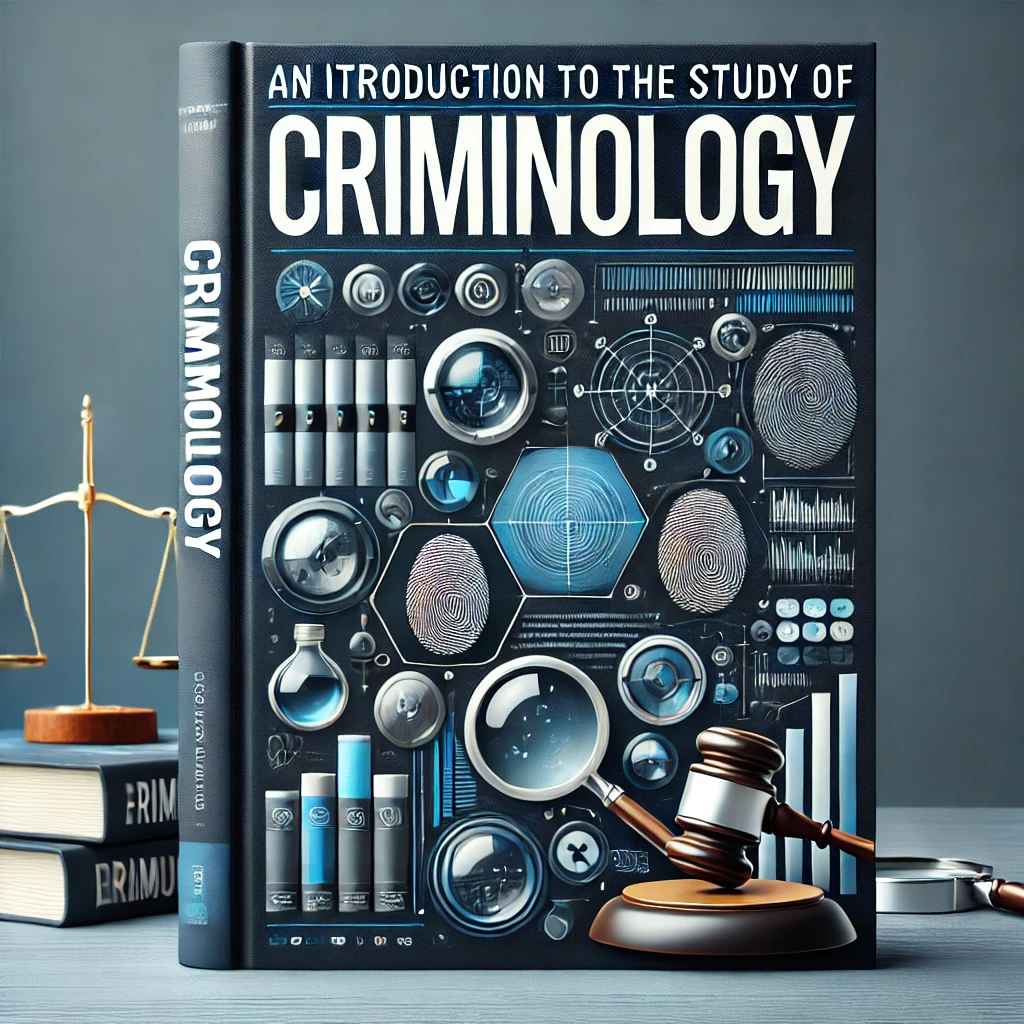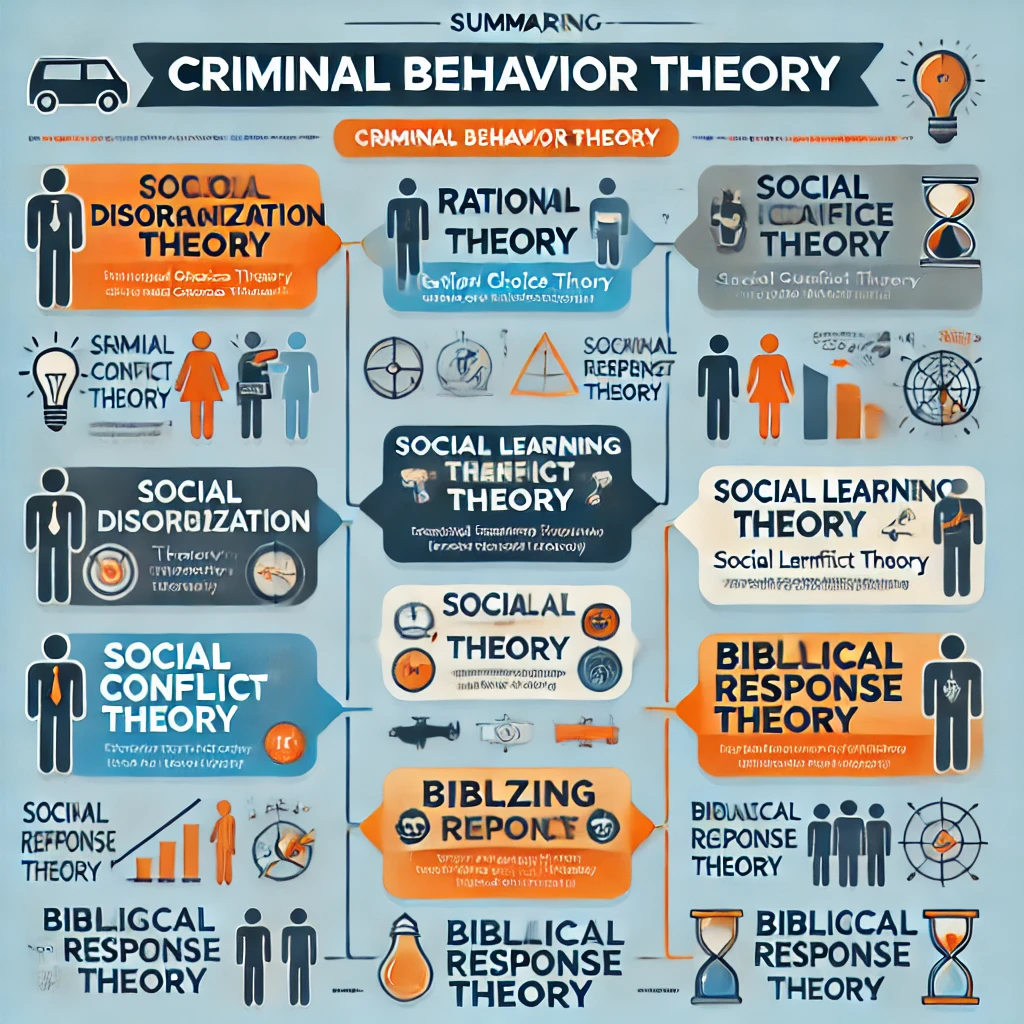Introduction to Criminal Behavior
Criminal behavior is a subject rich in study and analysis, as it refers to any act that conflicts with laws and societal norms. Humanity’s interest in studying criminal behavior dates back to ancient times, when scientists began to ask questions about the causes and motives of crime. Thanks to the development of science, many theories have emerged that explain this behavior, from biological and psychological to social, economic, and political.
The Importance of Criminal Theories
Criminal theories play a vital role in understanding the underlying causes of crimes. Each theory focuses on a different aspect of criminal behavior and provides a distinct explanation that helps analyze and understand the motives that drive individuals toward crime. These theories are not just abstract ideas; they contribute to developing effective criminal policies aimed at reducing crime rates.
Article Objectives
This article reviews a set of theories explaining criminal behavior, analyzing each theory and discussing the strengths and weaknesses. Examples and explanations are provided to deepen the understanding of crime from various scientific angles.
The Biological Theory of Criminal Behavior
History of the Biological Theory
The biological theory emerged as the first scientific explanation of criminal behavior in the 19th century, pioneered by scholars such as Cesare Lombroso. He hypothesized that some individuals are born with criminal tendencies and attempted to classify criminals based on physical characteristics. This theory was grounded in the principle that crime is linked to certain biological traits.
Biological Explanation of Crime
The biological theory emphasizes that crime may result from genetic or biological factors, such as genes, nervous system composition, and hormonal balance. For example, some studies have demonstrated a relationship between imbalances in neurotransmitter levels in the brain and a higher propensity for aggressive behavior.
Criticism of the Theory
The biological theory has faced substantial criticism. Some argue that focusing solely on genetics and biological factors neglects the social and psychological dimensions that also influence criminal behavior. Moreover, many biological studies have failed to provide conclusive evidence that biological traits alone determine criminality.
Recent Research
In recent years, biological studies have expanded to explore the genetic and hormonal influences on criminal behavior. For instance, researchers now study the MAOA gene, known as the “warrior gene,” and its potential link to aggressive behavior in certain individuals.
The Psychological Theory of Criminal Behavior
Key Psychological Theories
Several influential theories have shaped the psychological understanding of criminal behavior. Sigmund Freud’s psychoanalytic theory suggests that unresolved subconscious conflicts can lead to criminal actions. On the other hand, social learning theory argues that criminal behavior is learned through observing and imitating others, especially when individuals are surrounded by those who engage in crime.
Psychological Causes of Criminal Behavior
Psychological theories propose that certain individuals may be predisposed to criminal behavior due to past psychological experiences, particularly during childhood. Trauma, physical abuse, neglect, and societal pressures can all contribute to developing criminal tendencies later in life.
Role of the Psychological Environment
The psychological environment is crucial. Growing up in a dysfunctional setting can foster hostility or unlawful behavior. Studies have shown that children raised in unstable family environments are more likely to develop aggressive behavior patterns.
Examples of Crime from a Psychological Perspective
Violent crimes can often be linked to psychological motivations, such as extreme anger or specific mental health disorders like antisocial personality disorder.
The Social Theory of Criminal Behavior
Key Social Theories
Social theories emphasize the impact of society and the environment on criminal behavior. The differential association theory posits that individuals learn criminal behavior through interactions with people who engage in crime. Social disorganization theory highlights that crime often arises from social conditions like poverty and unemployment.
Impact of the Social Environment
According to social theories, environmental factors significantly influence an individual. For example, children raised in high-crime neighborhoods are more likely to develop criminal behaviors.
Criticism and Challenges
Despite its insights, the social theory has limitations, such as the difficulty in distinguishing the effects of social factors from biological influences on criminal behavior.
Applied Research
Community studies have demonstrated how social factors affect crime, revealing differences in crime patterns between urban and rural areas.
The Economic Theory of Criminal Behavior
Impact of Economic Factors
The economic theory focuses on how financial conditions influence decisions, including criminal activities. Factors such as poverty, unemployment, low income, and economic inequality often push some individuals toward crime. Economic crises are frequently associated with rising crime rates as people struggle to meet basic needs.
Cost-Benefit Analysis Theory
This theory suggests that crime can be a rational choice resulting from analyzing costs and benefits. People may weigh the potential rewards of crime against the risk of punishment, and if the benefits outweigh the risks, crime becomes an attractive option.
Real-Life Examples
Data shows that theft and financial crimes tend to spike during economic downturns. For example, the Great Depression in the United States saw a rise in theft as many faced severe economic hardship.
The Political and Legal Theory of Criminal Behavior
Impact of Policies and Laws
This theory explores how government policies and laws influence criminal behavior. Some people may resort to crime in response to what they perceive as unjust legislation or policies. Harsh laws or regulations that perpetuate economic or social injustice may drive individuals to commit crimes as a form of protest.
Crime as a Tool of Political Protest
In some instances, criminal behavior serves as political protest. Acts like vandalism or violent demonstrations can express opposition to political or economic circumstances.
International Examples
Comparing different countries reveals how varying policies impact crime rates. Nations with fair social and economic policies generally have lower crime rates compared to those with severe economic disparities or political oppression.

Modern Criminological Theories
Interactionist Theory (Symbolic Interactionism)
This theory examines how social interaction shapes criminal behavior, emphasizing that the definition of crime is fluid and context-dependent. It argues that individuals may be pushed toward crime due to social stigma or stereotypes.
Routine Activity Theory
This theory posits that crime occurs when conditions align: a motivated offender, a suitable target, and a lack of effective guardianship. It emphasizes the significance of the surrounding environment and preventive measures.
Challenges Facing Modern Theories
Despite their insights, modern theories can be difficult to apply or have limited explanatory power for all types of crime. Nevertheless, they enhance the understanding of crime in complex urban settings.
Integrative Explanations of Criminal Behavior
Combining Different Theories
Criminologists are increasingly adopting integrative approaches, recognizing that no single theory fully explains criminal behavior. Instead, a combination of biological, psychological, social, and economic factors provides a more comprehensive understanding.
Research on Intersecting Factors
Recent research integrates biological, psychological, and social dimensions. For instance, someone biologically predisposed to aggression might be more prone to crime if raised in poverty and psychological distress.
Practical Examples
Integrative approaches have informed effective policies, such as providing social and psychological support to at-risk individuals. They have also influenced prison reforms that address the root causes of criminal behavior.
General Critique of Traditional and Modern Theories
Limitations
Traditional theories often face challenges in addressing diverse types of crime, especially with the rapid evolution of society. Some focus too narrowly and fail to account for modern complexities.
Comparing Theories
Each theory offers a unique perspective, but integrating them yields a clearer, more comprehensive understanding. Biological theories may explain certain crimes, while social theories are better suited for crimes in economically disadvantaged areas.
Future Developments in Crime Theories
Criminal theories will likely evolve alongside advancements in neuroscience and social psychology. The rise of new crimes, such as cybercrime, will require innovative theories and explanations.
Conclusion and Recommendations
Comprehensive Summary
This article has covered various explanations of criminal behavior, highlighting the complexity and multifaceted nature of crime. It is clear that criminal behavior cannot be attributed to a single factor but is the result of a complex interplay of various influences.
Recommendations for Students and Academics
Researchers should adopt multi-theoretical frameworks for deeper insights and rely on both field and theoretical research to understand emerging factors affecting crime.
Call for Further Research
As societies evolve and new forms of crime emerge, ongoing research is crucial. Understanding and preventing crime will require developing theories that reflect these changes.

